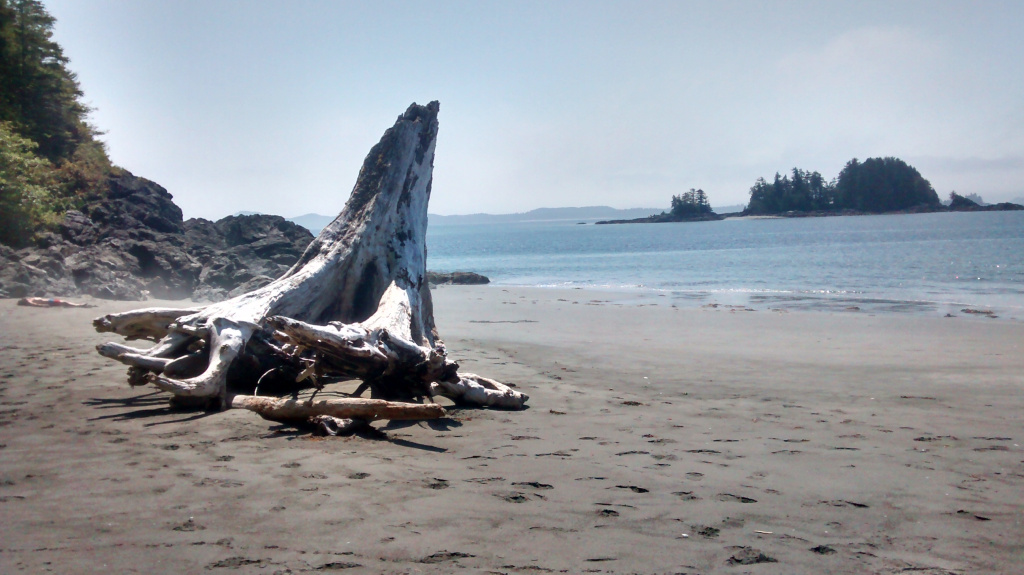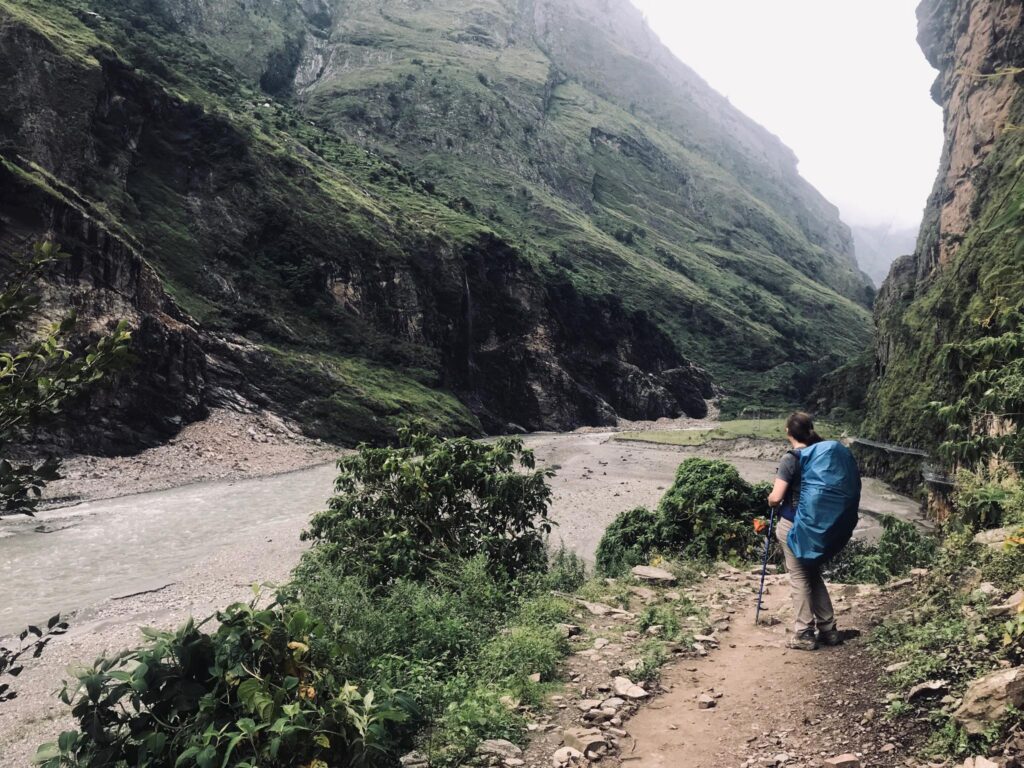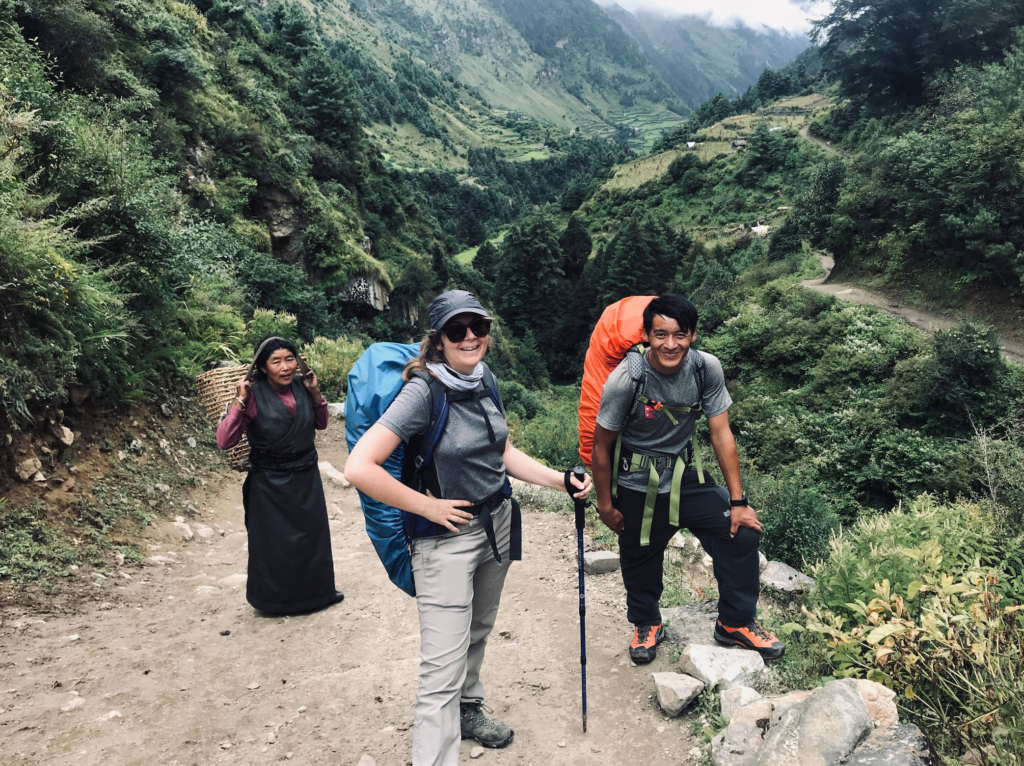Trail Mishaps- 5 Lessons Learned by an Amateur Hiker
Over the last couple of years, I have read many adventurous tales of hikes worldwide. The stories inspired me to be more confident as a hiker. I’ve had some incredible experiences and love to challenge myself, but things don’t always go perfectly.
I grew up as a pretty indoors gal and have had to learn along the way as an adult. I’ve turned to the plethora of information online, talking to other hikers and, as these tales demonstrate, getting out there and learning the hard way.
It’s important as a hiking community to share the moments that didn’t go as planned as well as our triumphant, epic Insta pics. Here are some pieces of advice and tales of mishaps that will maybe stop you from stumbling in the same ways. Maybe you’ll get a laugh, or maybe you’ll recognise your own blunders.
1. Don’t be stubborn- If you are on the wrong route, go back.
I went alone to Flores Island, British Columbia, as I often do, expecting there to be other hikers around. There were none. This 11-kilometer hike should have been a piece of cake. It was a boat ride away from the town of Tofino, following beaches with an overnight camp at the far end.
I spent an eerily beautiful night camping on a misty, deserted beach on an island of cougars and wolves. The next day should have been a simple beach and forest walk back the way I came to the First Nations village of Ahousat to catch the boat taxi back to Tofino.
Alas, I missed a turn into the forest on the way back and found myself on a rocky point. I walked far enough that I decided to try and reach the beach on the other side by carrying on around the point.
I scaled wet rocks above the sea, some of which were sharp and covered in barnacles. Some areas had very modest foot- and hand-holds for someone carrying a huge backpack with a tent.
At one point, I had to set my bag on a ledge while I clambered across a challenging part and then retrieve the bag before it crashed into the sea. Sweat poured from my brow as I recognised the severity of what would happen if I slipped into the water and hit my head.
I managed to stay mostly dry (aside from sweat) until the final twenty metres to shore, where the rocks grew smooth and steep. The only way forward was through the water.
Overwhelmed with gratitude to see the beach, I no longer cared that there was no room to remove my clothes before I plunged into waist-deep water. My trousers and boots were sopping when I emerged on the beach exhausted, panicked but deliriously happy to have made it without injury.
I laughed madly as I changed into dry trousers and chided myself for my stupidity and recklessness before continuing the rest of the comparatively relaxing beach walk. The funny thing about near misses you have alone is that you can debate whether you should speak up about them to others. I have decided to own up so I can warn others to TURN BACK if a route is ridiculously sketchy instead of powering through!
2. You can never have too much chocolate or a warm enough sleeping bag!
My first-ever multi-day backpacking trip was on the Sunshine Coast Trail in British Columbia between Powell River and Lang Bay. It turned out to be a rather intense route for a first-timer with six days of walking in fairly remote forest and mountain areas.
I had to drastically ration some of my food as I’d underestimated the menace of hiker hunger. This mishap made me more exhausted than I should have been, and on the fourth day, my energy went downhill.
I joined the beautiful forest- and lake-strewn path from Powell River and spent several days meandering around and camping in some modest but very welcome shelters. On the fourth morning, I awoke on Tin Hat Mountain to cold mist and quickly set off in an attempt to get warm. Soon after, a hail storm broke out. I was very chilly by the time I got off the mountain. I should have changed, but I carried on damp because the sun came out.
Around 20 kilometers later, I was excited to reach the relative warmth of the hut after a particularly demoralizing final uphill stretch. I arrived to see an open-sided shelter. There were no walls or pellet stove, and the mist and rain were creeping in.
The other hikers I’d been meeting each night were also pretty gutted to see this mediocre ‘hut.’ Some set up tents inside. I was feeling very slow and tired as I ate dinner. Luckily, a much more savvy hiker noticed my deteriorating condition and told me to get in her warm sleeping bag and nap. My sleeping bag was woefully inadequate. She invited me to share her little tent so we could stay a bit warmer.
I am forever grateful as she most likely stopped me from becoming hypothermic. The following morning, the sun shone on the lake, and we basked in it – what a relief! Nowadays, I have a far superior sleeping arrangement, complete with a decent camping mat and a warm sleeping bag.
3. Your feet are your main asset- Look after them.
It took several multi-day hikes wearing a rucksack to truly understand my number one hiking certainty: if the pack is more than the size of a day bag, I WILL get blisters on my toes.
It was a balmy morning as I walked out of Matosinhos, near Porto, on the first day of my Camino Portuguese trek. I pounded along, passing gorgeous shoreline, a picturesque lighthouse and boardwalks. I ignored sore spots on my feet as I chatted with other pilgrims and kept moving under the increasingly hot sun.
Arriving at Villa de Conde just after lunch, I had time to assess the damage – big blisters. I was annoyed at myself for not stopping and wrapping them earlier. I hobbled to the beach to watch the sunset and contemplate what would be a more difficult walk the following day.
As expected, I struggled a little the next morning. I carried on until I felt the pressure ease and noticed a disgusting seeping through the material on my breathable hiking shoes. My blisters had popped. I knew this was a highly unhygienic situation, so I stopped and disinfected my feet before bandaging them.
After a couple more days of tenderness, my feet improved. I learnt to tape my toes before starting out. Preparing my feet is probably the most valuable thing I’ve learned hiking. The Portuguese Camino was an absolute delight apart from these injuries. I smile just thinking about it.
4. Don’t get complacent, even on a day hike in an area you know.
I am slightly embarrassed about my most recent mess-up as it happened so close to home. Since the start of the pandemic, I’ve been staying at my mum’s in Shropshire. One day I decided to figure out a new route to the Stiperstones and then come back on my usual route to Pontesbury.
It’s a beautiful, circular walk that usually takes me five hours in total. I estimated with my slightly different, bigger circle, it would maybe be 5.5 to 6 hours.
I jauntily set out wearing leggings and a black T-shirt with a bag containing a bottle of water, a flask of coffee, a sandwich and a piece of cake. I set off through woods and along lanes to Pulverbatch before going uphill to join the Shropshire Way.
I realised after about two hours that I had forgotten my hat, it was really hot, and it was taking me much longer than I’d thought. Nevertheless, I continued, ducking into the shade at every opportunity and trying very hard to ration my drinks. At one point, I climbed uphill in the beating sun (in the UK! Who knew!) and was glad I was at least wearing suncream.
As I walked along the Portway to join a track down to the Bridges pub, I realised I was two hours behind my expected schedule and had run out of water. My face felt like it was on fire, and there wasn’t one measly cloud in the sky.
From the Bridges, a track climbed up seemingly forever to a farm before finally getting onto the stones. I’d never approached it from this side before and couldn’t believe how long it took.
I’d left home at 11: 30 a.m. (not starting early as is sensible on a warm day…) and thought I would get to Stiperstones halfway point at around 2 p.m. to 2:30 p.m. I made it there around 5 p.m. I could feel my heartbeat in my face, and I was out of water. I decided not to spend another two hours walking home and called in the cavalry.
The joy of hiking close to home sometimes means phoning your mum to come (and BRING ORANGE SQUASH!) to save you. This would have been a lovely walk if I’d been more prepared. Unfortunately, it turned into a sweaty, panicky fiasco.
5. Attitude is EVERYTHING.
It always makes me happy remembering my time on the Manaslu Circuit in Nepal with my sister, Cath. It was an awesome trail to do together, but I know my thoughts at the moment weren’t always so rosy.
My sister lives in Kathmandu and invited me to come on a trek. A couple of days after stepping off a plane from Vancouver, we joined our guide on a hilariously bumpy bus ride to Soti Khola, where we would start the walk.
We spent a couple of hot, humid days trekking and crossing landslides, mudslides and a suspension bridge above a raging river (not good for those with vertigo!). I found myself struggling a little and noticed Cath was often ahead of me by miles. Our poor guide had to hang back at my pace.
I began to feel frustrated with myself. I’d just done the four-day Juan de Fuca trail in Canada with a much fuller pack. Why was I so slow now?
One evening, Cath noticed I was quiet, and we talked about my concerns. She told me we weren’t in a rush – we had all day to get to the next place. She assured me I was doing great, especially with the altitude.
My sister was not a hiker until she moved to Nepal. Now, she’s done the Annapurna Circuit and Everest Basecamp, which I think is fantastic. She said she tells herself she can do anything, and it’s all psychological.
From then on, I felt better and put less pressure on myself. We laughed, slipped around in the mud and immersed ourselves in the breathtaking landscape all around us. I learned to enjoy the journey and laugh at myself. I put one foot in front of the other and smiled as much as possible.
About the writer
Emma is a happy and quiet hiking enthusiast trying to find balance in this funny life. She currently lives with her family in beautiful Shropshire, UK, working for a small charity and waiting for things to settle before hitting the trails again. So far, she’s enjoyed hiking in beautiful Canada, Portugal, Spain, Nepal, Guatemala as well as at home in the UK. You can follow her adventures on Instagram.



